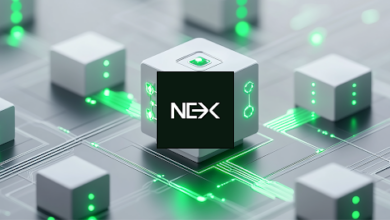Ethereum Debates Increasing Gas Limit to Reduce Fees and Boost Scalability
- Increased gas limit to 40 million
- Potential 15% to 33% reduction in transaction fees
- Risks of centralization and network overload
The Ethereum community is debating a proposal to increase the network’s gas limit from 30 million to 40 million, aiming to reduce transaction fees and improve efficiency. Recently, 10% of validators signaled support for this change, a significant increase from the previous month, when only 1% were in favor.
Configuring my validator for a 36M gas limit:
→ staking operators control the gas limit
→ Ethereum held a 30M limit for 3.5 years
→ a 20% bump to 36M safely greases wheels
→ see gas limit flags at https://t.co/TfTkOnmzJQWen gigagas? SNARKed execution clients (zkELs)…
— Justin Ðrake 🦇🔊 (@drakefjustin) December 8, 2024
Gas in Ethereum represents the unit of measurement for the computational effort required to execute transactions or smart contracts. The gas limit per block defines how many operations can be processed simultaneously. Increasing this limit would allow for more transactions to be included per block, potentially reducing fees and improving the scalability of the network.
Ethereum co-founder Vitalik Buterin has previously suggested a 33% increase in the gas limit to 40 million to improve network throughput. This change could result in a 15% to 33% reduction in layer-1 transaction fees.
However, this proposal faces criticism. Experts warn that a rapid increase in the gas limit could overload the network’s infrastructure, requiring more computing resources from validators. This could lead to centralization, as only operators with greater technical capacity would be able to keep up with demands, contradicting Ethereum’s principle of decentralization.
The “Pump The Gas” campaign, led by developers like Eric Connor and Mariano Conti, seeks to educate the community about the benefits of increasing the gas limit. They argue that the change could boost innovation and enable the development of more complex decentralized applications on Ethereum’s layer 1.
However, it is generally agreed that any changes should be implemented gradually and cautiously to ensure the stability and security of the network. Abrupt increases can result in block propagation failures and system destabilization.
At the time of publication, the price of Ethereum was quoted at $3.414,32 with a drop of 5.8% in the last 24 hours.
The decision on whether to increase the gas limit is crucial for the future of Ethereum, especially at a time of increasing adoption of decentralized applications and decentralized finance (DeFi) solutions. Balancing the need for scalability with maintaining security and decentralization remains a core challenge for the community.
Disclaimer: The content of this article solely reflects the author's opinion and does not represent the platform in any capacity. This article is not intended to serve as a reference for making investment decisions.
You may also like
Genius Group Ordered to Sell Bitcoin Holdings
Genius Group must sell 10 BTC due to a court order, slashing its crypto treasury and market cap significantly.Unexpected Setback for Genius GroupMarket Cap Falls Below Bitcoin ReservesConcerns About Stability and Transparency

Ethereum Price Sees 4 Straight Red Months
Ethereum has closed four red months in a row, but long-term holders remain hopeful for a rebound.Ethereum’s Tough Streak ContinuesHope on the Horizon for Ethereum Holders

Nexchain Emerges as April’s Best ICO: A New Era for Blockchain
Nexchain is committed to facilitating interoperability from one blockchain to the next through artificial intelligence, allowing for cross-chain communication and operational efficienciesConclusion

Bitcoin Volatility Expected as U.S. Jobs Report Looms
U.S. jobs data and Powell’s speech today could trigger major Bitcoin volatility. Here’s what to watch.What to Expect from Today’s Market MovesWhy Bitcoin Traders Are Watching Closely

